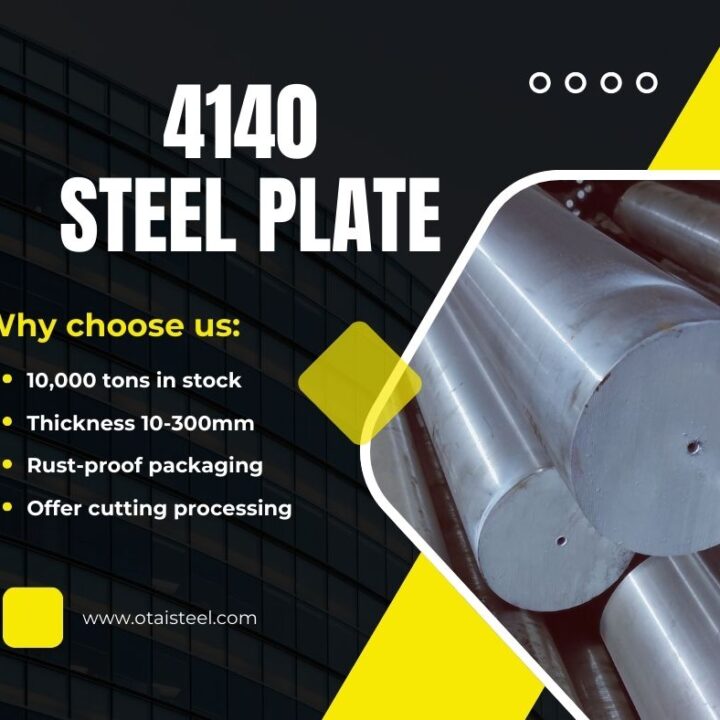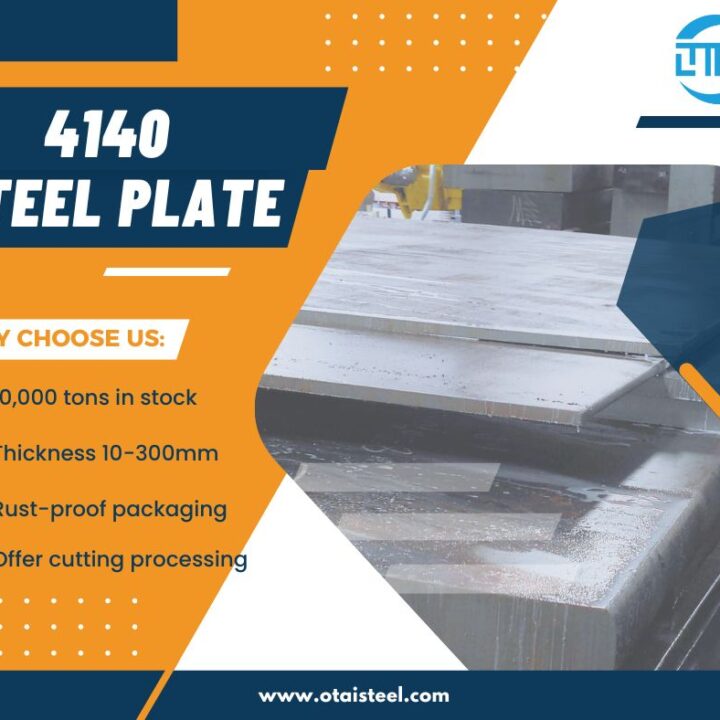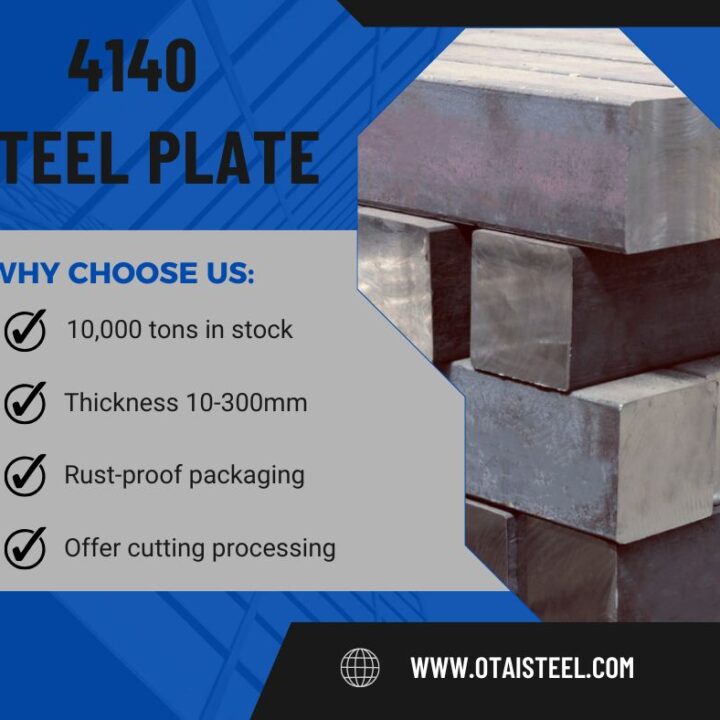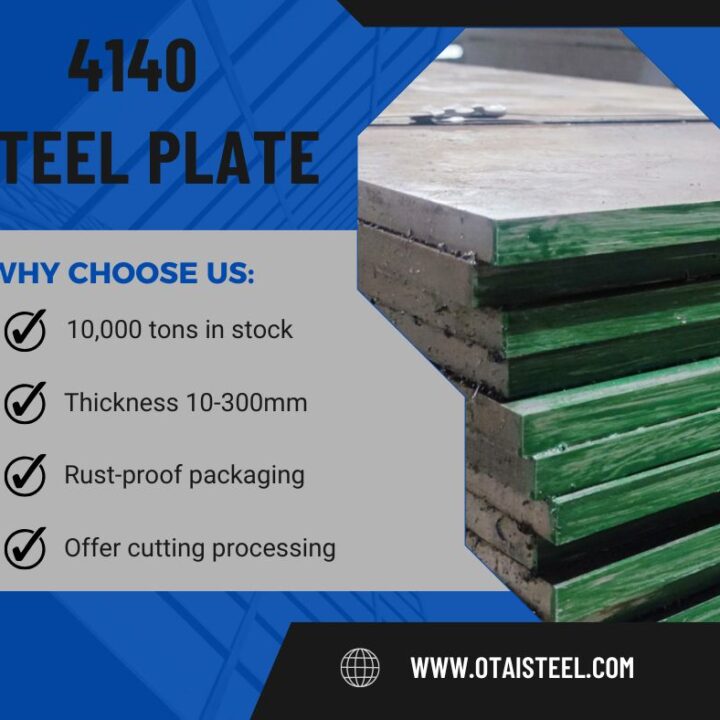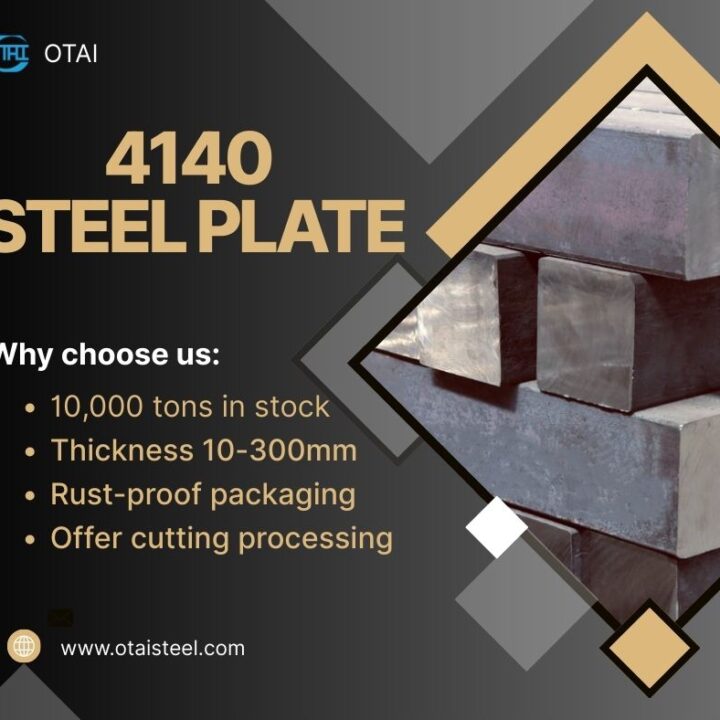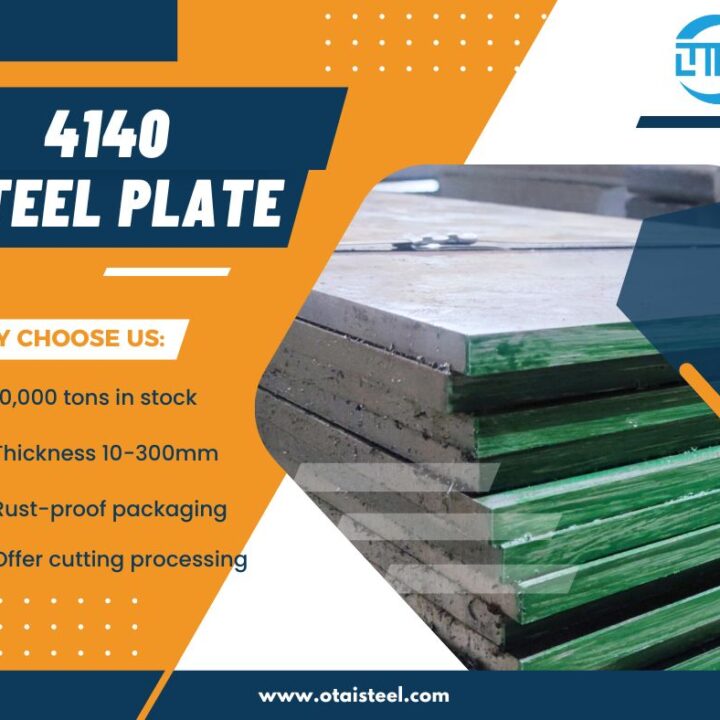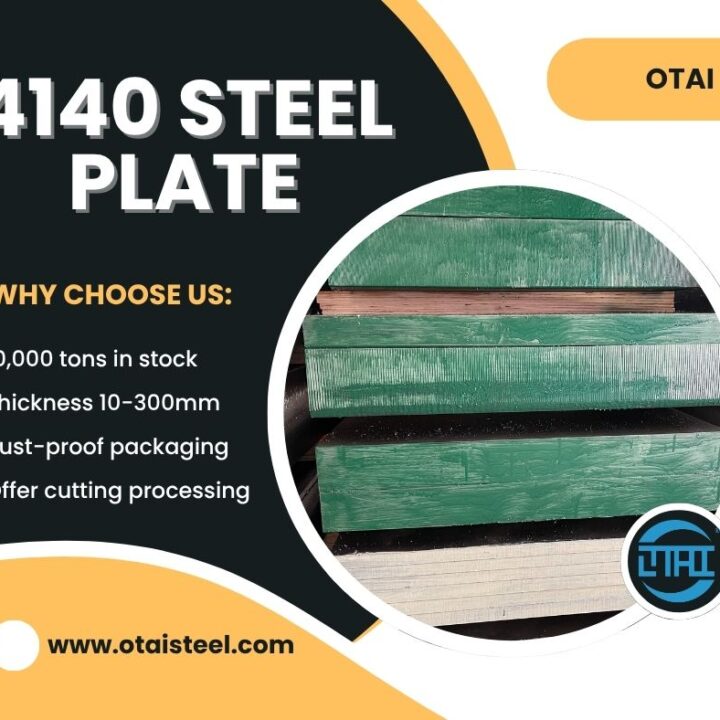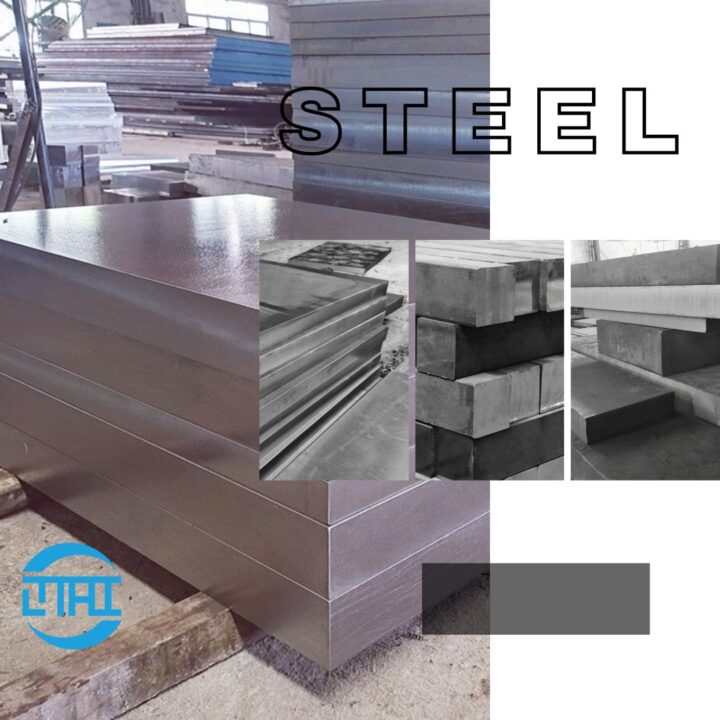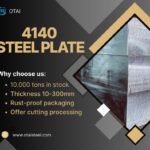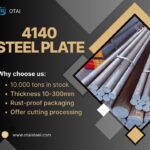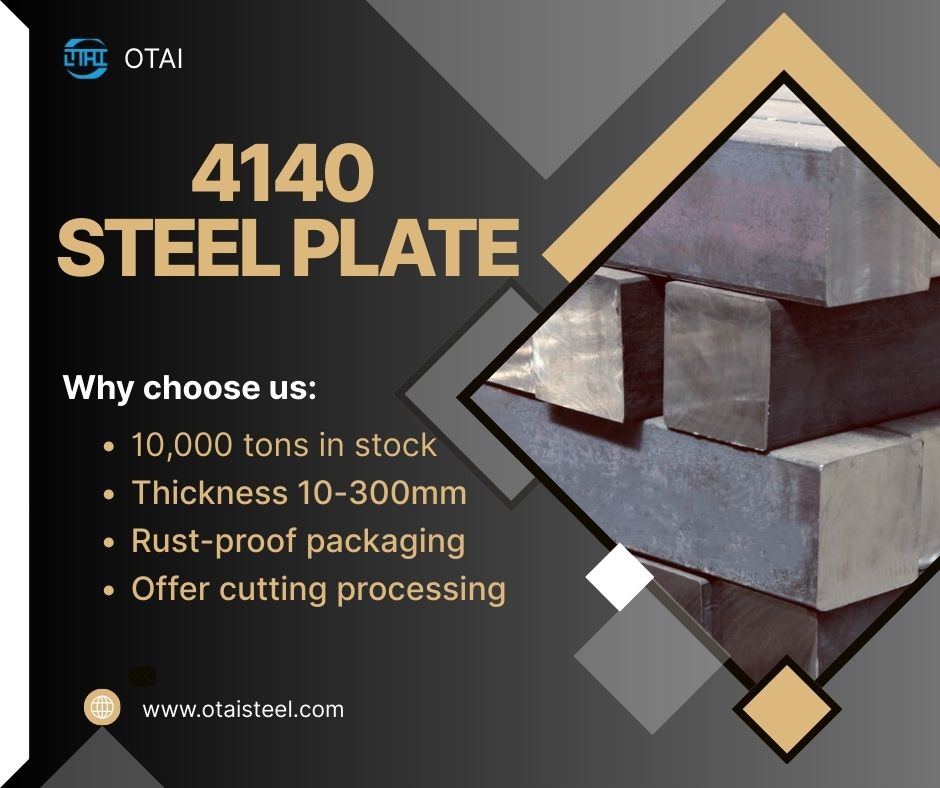 Is 4140 Steel Hard?
Is 4140 Steel Hard?
When engineers and metalworkers ask, “Is 4140 steel hard?”, they’re not just curious—they’re choosing a material that must perform under pressure, abrasion, and impact. So, let’s take a deep dive into the true hardness of 4140 steel, what affects it, and whether it’s the right fit for your high-performance applications. 🧠💪
🔍 What Is 4140 Steel, Exactly?
4140 is a chromium-molybdenum alloy steel known for its excellent balance of strength, toughness, and wear resistance. It’s part of the AISI 4000-series and is widely used in shafts, gears, bolts, and tool bodies—any application where both strength and surface hardness matter.
Its chemical composition plays a huge role in its mechanical properties:
| Element | Typical Content (%) |
|---|---|
| Carbon (C) | 0.38 – 0.43 |
| Chromium (Cr) | 0.80 – 1.10 |
| Manganese (Mn) | 0.75 – 1.00 |
| Molybdenum (Mo) | 0.15 – 0.25 |
| Silicon (Si) | 0.15 – 0.30 |
| Iron (Fe) | Balance |
This mix allows it to be heat treated for hardness and strength, making it far more versatile than plain carbon steels.
🧱 So, Is 4140 Steel Hard in the Raw State?
In its annealed (softened) condition, 4140 alloy has a Brinell hardness of around 197 HB, which is relatively soft and suitable for machining. However, this isn’t where 4140 shines.
The magic happens after heat treatment.
| Condition | Hardness (Brinell) | Rockwell C Equivalent |
|---|---|---|
| Annealed | 197 HB | ~10 HRC |
| Normalized | ~229 HB | ~20 HRC |
| Quenched & Tempered (Q&T) | 269–302 HB | ~28–32 HRC |
| Fully Hardened | Up to 600 HB | ~55 HRC (after surface hardening) |
So the answer to “is 4140 steel hard?” really depends on how it’s processed. In its hardened form, it definitely qualifies as a hard steel, especially after oil quenching or nitriding.
🔥 How Heat Treatment Influences Hardness
4140’s mechanical properties are heavily dependent on how it’s heat treated:
-
Oil Quenching 4140 steel rapidly cools it from the austenitizing temperature (~850°C), producing a martensitic structure that is very hard but also brittle.
-
Tempering adjusts that brittleness, balancing toughness and hardness.
-
Nitriding 4140 steel creates a super-hard surface layer (up to 65 HRC) without affecting the core toughness.
This makes it ideal for applications requiring wear-resistant surfaces, like tool steels for high-pressure dies.
⚙️ Hardness vs Toughness: The Real Strength of 4140
A material can be hard but brittle (like glass), or tough but soft (like rubber). 4140 alloy gives you both—decent hardness and excellent toughness. That’s why it’s widely used for gear shafts under high torque, or crankshafts in racing engines.
For example:
-
Tensile Strength after Q&T: 850–1000 MPa
-
Yield Strength: 655–900 MPa
-
Impact Resistance (Charpy V-notch): 30–50 J at room temperature
That’s a strong, resilient material you can count on.
🛠️ What Industries Ask: “Is 4140 Steel Hard Enough for This?”
Let’s look at some real-world applications where 4140’s hardness matters:
| Industry | Application | Reason for 4140 Use |
|---|---|---|
| Automotive | Drive shafts, axles | High torque, fatigue-resistant |
| Oil & Gas | Drill collars, connectors | Strong and crack-resistant under pressure |
| Tooling & Dies | Tool holders, mandrels | Heat-treated 4140 steel hardness holds up under force |
| Aerospace | Landing gear components | High strength-to-weight ratio |
| Construction | Hydraulic cylinder shafts | Wear resistance and impact strength |
These industries depend on 4140 for its combination of hardness, durability, and reliability.
🧩 How 4140 Compares to Other Steels
Here’s how 4140 stacks up to other common steels when it comes to hardness:
| Steel Grade | Typical Max Hardness (HRC) | Heat Treatable |
|---|---|---|
| 1018 Mild Steel | ~20 | No |
| 1045 Carbon Steel | ~50 | Yes |
| 4140 Alloy Steel | ~55 (nitrided) | Yes |
| D2 Tool Steel | ~62 | Yes |
| Stainless 304 | ~20 | No |
While it doesn’t reach tool steel hardness levels like D2, 4140 is far easier to machine and weld, especially when preheat for welding 4140 is correctly applied.
🏢 Company Advantage: Why Buy 4140 Steel from Otai?
At Otai Special Steel, we stock over 10,000 tons of 4140 steel plates and bars in various heat-treated and machined conditions. Here’s why professionals choose us:
-
✅ Wide hardness range: annealed, normalized, Q&T, nitrided
-
✅ Dimensions from 6mm to 300mm, with cutting and heat-treatment services
-
✅ UT-tested, mill-certified, and 3rd-party inspection available
-
✅ Fast delivery with stable inventory
-
✅ Trusted by top global companies in automotive, oil & gas, and heavy machinery
Whether you need 4140 alloy square bar, precision cut plates, or hardened shafts—we deliver quality with every order.
❓ FAQ
Q1: Is 4140 steel harder than stainless steel?
Yes, especially when heat treated. 4140 can reach up to 55 HRC, while stainless 304 is around 20 HRC.
Q2: Can 4140 be hardened by flame or induction?
Absolutely. Induction hardening of 4140 steel is a popular method for increasing surface hardness up to 60 HRC.
Q3: What’s the best hardness level for machining?
Annealed (around 197 HB) is best for machining. Afterward, you can harden it to your needs.
Q4: Is 4140 alloy good for tools?
Yes, especially when 4140 Q&T steel properties are optimized. It’s strong, hard, and tough enough for moderate-load tools.
Q5: Does hardening 4140 make it brittle?
If over-hardened without proper tempering, yes. Always temper after quenching for best results.
